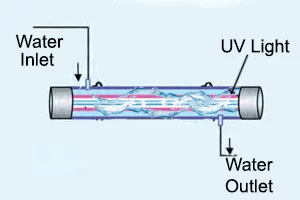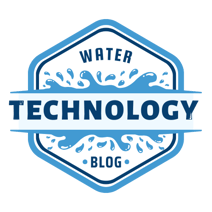UV Disinfection: The Final Shield for Safe Drinking Water
When it comes to delivering safe drinking water to households, the end of the water supply line is a critical checkpoint. After treating water for turbidity and other contaminants, UV disinfection serves as a powerful final step to ensure water is free of harmful pathogens like Giardia, Cryptosporidium, and viruses. This blog post explores why UV disinfection at the end of a water supply line is an effective and reliable choice for small-scale systems, such as one serving 80 households.
WATER PURIFICATION
5/26/20251 min read


UV disinfection uses ultraviolet light (typically at 254 nm) to inactivate pathogens by damaging their DNA, preventing reproduction. Placing UV at the end of the treatment process—after filtration steps like microfiltration—ensures that:
Pathogen-Free Water: UV eliminates >99.99% (4-log) of bacteria, viruses, and protozoa, including chlorine-resistant Giardia and Cryptosporidium, which are common concerns in water sources with 2–10 NTU turbidity.
No Chemical Byproducts: Unlike chlorination, UV adds no chemicals, avoiding disinfection byproducts that could affect taste or health.
Residual Protection Backup: While UV doesn’t provide residual disinfection in distribution pipes, it ensures water entering the system is pathogen-free, complementing a low-dose chlorination step for residual protection.
For a water treatment plant serving 80 households (60 m³/day or 2.5 m³/h), the UV system is compact and efficient:
UV Dose: A dose of 40 mJ/cm² meets EPA and WHO standards, inactivating Giardia (10 mJ/cm²), Cryptosporidium (12 mJ/cm²), and most viruses (40–60 mJ/cm²).
Equipment: A single UV reactor with low-pressure mercury lamps, sized for 2.5 m³/h, uses ~1.2–3 kWh/day. Backup lamps ensure reliability during maintenance.
Placement: Installed after microfiltration (which reduces turbidity to <0.1 NTU for optimal UV performance) and before chlorination or storage.
Maintenance: Replace lamps every 12–18 months and clean quartz sleeves monthly to prevent fouling. UV intensity sensors monitor performance.
Benefits and Considerations
Effectiveness: UV ensures water is microbiologically safe, critical for low-turbidity sources where pathogens may still lurk.
Cost: Capital cost is ~$5,000–$8,000, with annual operating costs of ~$500–$1,000 (power and lamp replacement), affordable for small communities.
Limitations: UV requires clear water (<1 NTU) and electricity. Pairing with chlorination (0.2–0.5 mg/L residual) protects against bacterial regrowth in pipes.
UV disinfection at the end of a water supply line is a reliable, chemical-free way to deliver safe drinking water. For a system serving 80 households, it guarantees protection against Giardia, Cryptosporidium, and other pathogens, ensuring every drop is safe.
